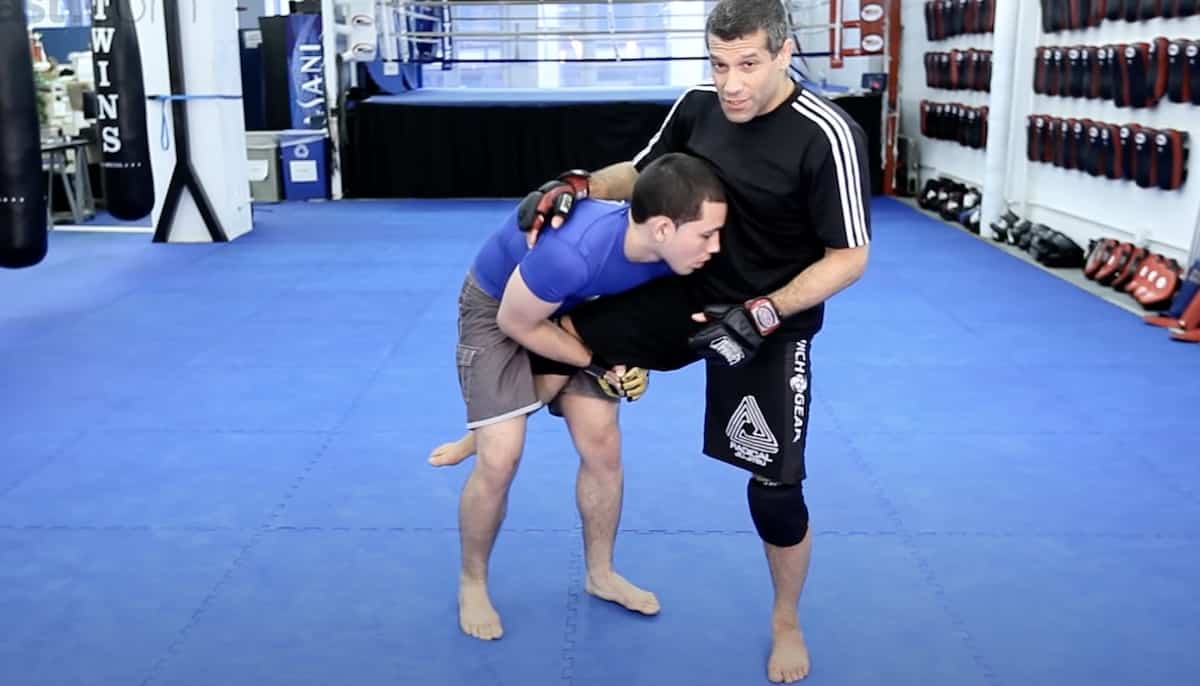Single Leg Takedown: Explained

To go along with our breakdown of the double leg takedown, we’ll also spotlight the single leg takedown. The single leg is another must know basic technique you must know.
It is also used by nearly every form of grappling and has numerous variations. Just knowing a few single leg entries can take your takedown skills to another level.
Here is a full breakdown of almost everything you need to know about the single leg takedown. We’ll detail how it works and give you a few different single leg entries.
Who created the single leg?
Like the double leg, the single leg takedown has been around as long as humans have been grappling. The takedown is widely used within BJJ, wrestling, and MMA.
Many of the innovations of the single leg were created within wrestling and adopted with BJJ and wrestling. Today if you want to advance your skills within these martial arts, you must have a solid single leg takedown.
How does the single leg work?
How the single leg takedown world is just basic physics. If you are able to shoot in and control your opponent’s leg, you have compromised their balance.
Once you’ve established this control it is just a mere test to see where their balance is weak. You begin moving your opponent side to side, lifting up their leg or driving your shoulder into their hip.
Eventually you will find their weak spot and be able to get them to the ground and establish control.
Basic single leg entry
The basic single leg entry comes from a tie up with your opponent. From here, you start with getting an underhood and establishing wrist control of your opponent. Also be sure to keep your head under your opponent’s to win the head positioning battle.
With your control established, you begin to move their front leg closer to your body. Really trying to get them to be heavy on their lead leg.
Once you get them lean over, you unattach from your opponent, level change, and wrap up their leg. Make sure to hook your forearm around their knee and grab hold of your wrist.
In this position, you have 2 on 1 control with both your arms and legs. Your arms hug the leg to your chest as your legs are pinching it together between them.
Now your opponent is heavy on their back leg and you can go into your finishing sequence. For this finish, take a slight step and turn with your outside leg as you drive your shoulder into their midsection.
Very easy entry and finish, which is one of the first single leg takedowns you learn.
Push entry to running the pipe
If you don’t like tying up with your opponent, there is another entry that comes off of pushing your opponent. From standing, you’re going to take your inside hand and push your opponent’s outside shoulder with force.
When you push them with force, this causes their front leg to come off the mat. This is your opening to grab and control your opponent’s front leg.
Once you grab their leg, be sure to be aware of your head placement before you run the pipe. Step to the side and drive your shoulder into their leg to finish the takedown.
High crotch single
The high crotch single leg is when you and your opponent are in opposite stances. When you’re in different stances, you can’t do the normal single leg entry.
Start this set up from inside collar ties on your opponent’s arms to control where they move. This high crotch entry is done in just two steps.
First, step in with your inside leg and then step around their leg with your lead leg. This puts their leg between your legs.
Now wrap your arm under your opponent’s leg and grab hold of your wrist with your inside hand. You can either step to the side to take them down or step in and lift up your opponent.
Low single
Another single leg entry you can do without clinching with your opponent is a low single entry. For this technique, you need to be in a mirror image with your opponent having the same side feet in front.
To do this entry, you need to stay lower than your opponent and look for his foot placement. Whenever they step forward and have their lead foot flat, this is your time to shoot in.
Change levels, dive down, and hook your opponent’s ankle with your outside hand. Once you have their ankle, quickly scoop it up and come up to your feet.
Arm drag to single leg
An arm drag is a great entry into the single leg takedown. From standing grab your opponent’s wrist with the same side hand and their tricep with your other hand.
Use these two grips to pull your opponent forward as you sit yourself on the mat. Their momentum will continue to bring them forward, so in the same motion you sit, you grab the single leg.
As you come down, try to catch your opponent’s back leg with your bottom leg to try and trip them up. This will make it easier to gain control of them as you come up and keep them from running away.
Now with their leg controlled, you can either run the pipe or go into another finish.
Other single leg finishes
There are numerous ways to finish the single other than running the pipe, so here’s a few of them. All of these finishes are from when you already have control of the opponent’s leg.
#1 High crotch lift: From single leg, switch your grip to your outside hand on top and step into lift your opponent.
#2 Step back and pull: Take a long step back(but not too long) with your inside foot and pull down on your opponent’s leg.
#3 Leg lace: If your opponent has good balance, you can place your outside hand under your opponent’s body to block the far knee. As you’re blocking their knees, turn them inward to trip them to the mat.
#4 Backstep to double: This works the same as the step back and pull, but instead you come forward and wrap up a double leg.
#5 Inside trip: This is when your opponent takes their foot from between your legs and begins to defend. Step in with your inside leg and trip your opponent down.
#6 Double unders: This is where you step to the outside and get double unders on your opponent’s leg. You can either lift their leg high to force them to fall or trip their back leg.
#7 Knee turn from inside control: Here you are holding your opponent’s leg with your inside arm. Grab the inside of their knee and step out as your turn their knee outward to complete your takedown.
#8 Single to double leg: Once you get the single leg control, you have the option of switching to a double leg. Step your outside leg, grab their far leg and drive. https://www.youtube.com/watch?v=JKtXtEOvSdQ
De La Riva to single leg
From the De La Riva guard sitting down with an inside collar grip. Take your non DLR hook leg and push your opponent’s back leg back and sit up.
As you sit up, you immediately go right into the single leg. From there, you go into whichever finish you want. https://www.youtube.com/watch?v=uizBKJZ6FRU
Tips for completing the single leg takedown
The single leg can be the best takedown in your arsenal, but you cannot forget the details. Here are the important tips you need to remember when going for a single leg.
- Attack the front leg: Always attack the front leg of your opponent. Attacking the near leg will always have a higher probability of getting the takedown.
- Level change: Changing levels are a must when going for single and double leg takedowns.
- Good posture: You need to have good posture and stop yourself from slouching over your opponent’s leg. Bad posture makes it easier for your opponent to defend your takedown.
- 2 arms on 1 leg: Legs are stronger than arms, so you always need to have two arms holding your opponent’s leg. This will allow you to lift their leg and establish control.
- 2 legs on 1 leg: On top of two arms on one leg, you also need to control the opponent’s leg with your legs. Placing their leg in between your legs, while holding it with both arms to have maximum control
- Head placement: Keep your forehead placed on the side of your opponent’s body. Whenever your head is off to the side it makes it easier for your opponent to defend.






